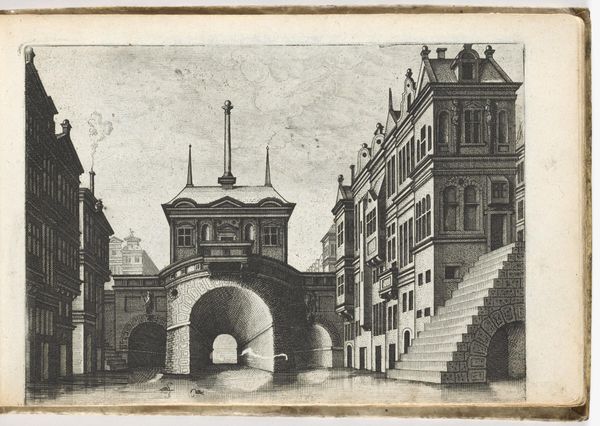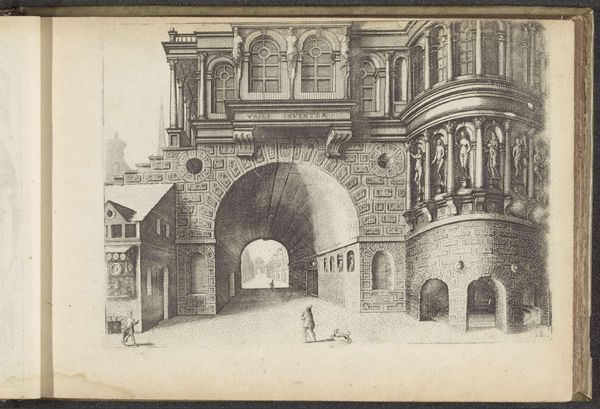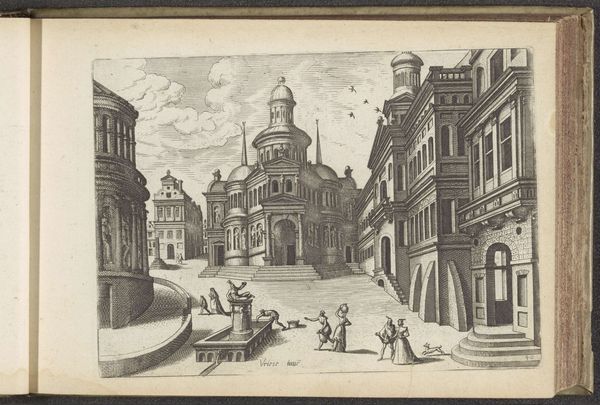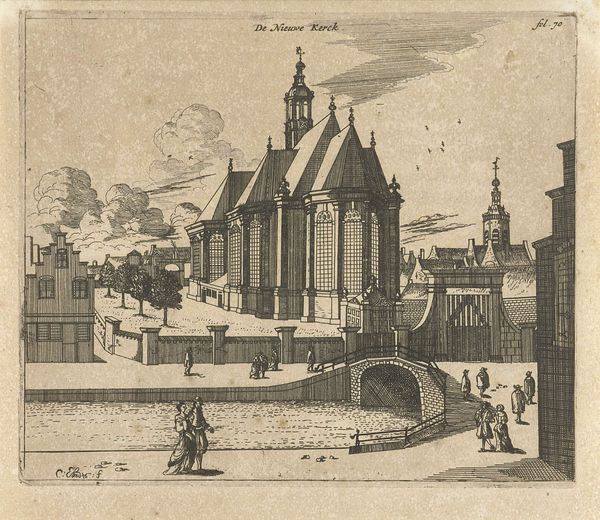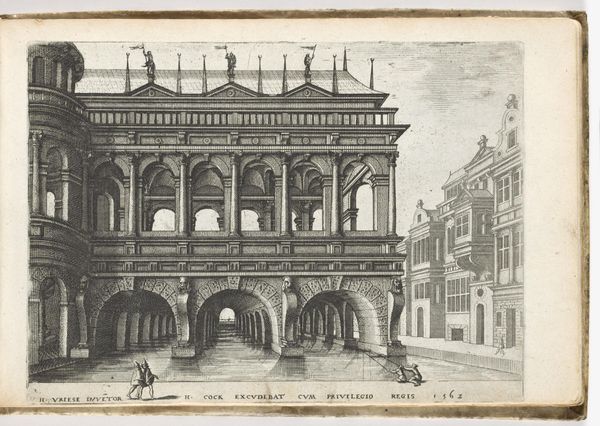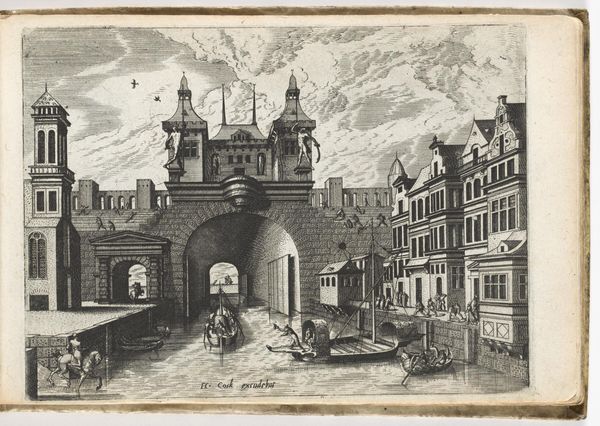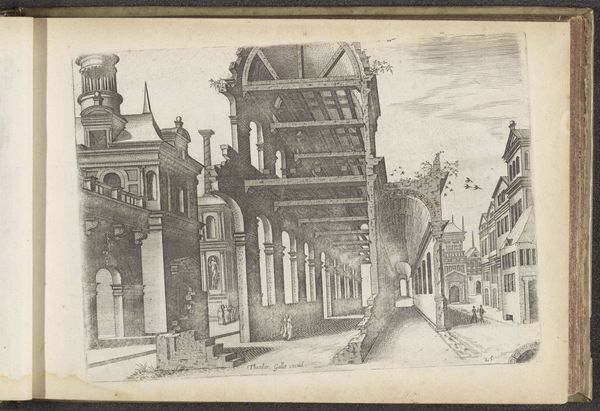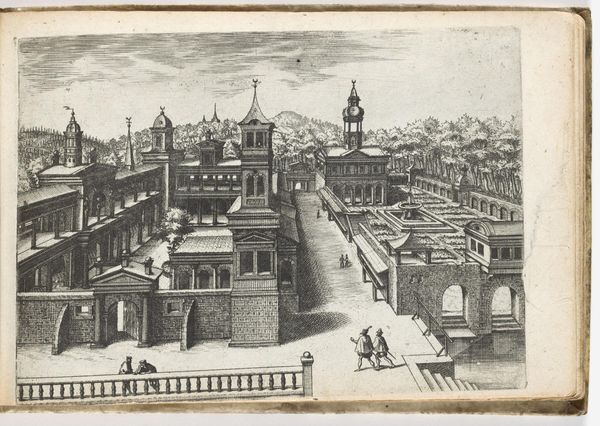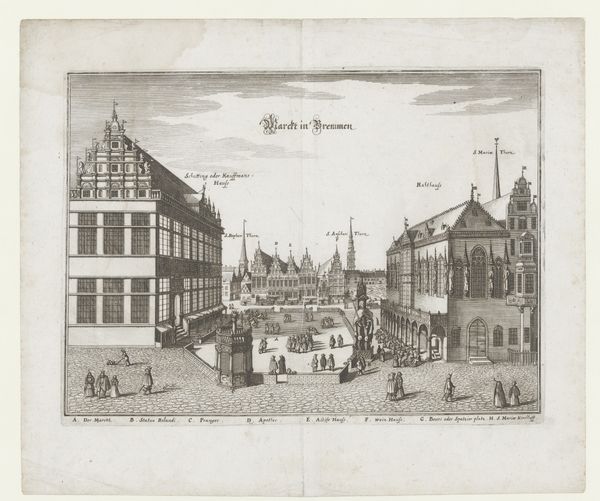
Gezicht op een kanaal met een brug en links een trap 1562 - 1601
0:00
0:00
johannesoflucasvandoetechum
Rijksmuseum
print, etching, engraving
#
dutch-golden-age
# print
#
etching
#
cityscape
#
engraving
Dimensions: height 152 mm, width 209 mm
Copyright: Rijks Museum: Open Domain
Editor: So this is "View of a Canal with a Bridge and Stairs to the Left" by Johannes or Lucas van Doetechum, created sometime between 1562 and 1601. It’s a print – an etching and engraving. There's something about the heavy lines that create such sharp contrasts; what catches your eye? Curator: It's a fascinating snapshot of civic identity. Doetechum gives us, literally, a bridge – and stairs! – to understanding Dutch cultural memory. Look closely. Does this scene strike you as wholly unique, or does it echo something deeper in the collective consciousness? Editor: I can't say that it is something that jumps right out at me. Curator: Consider how water, bridges, and the elevated perspective repeatedly appear in Dutch art and life. Waterways were vital for trade and defense; bridges symbolized connection and prosperity. Even those imposing steps could symbolize a rise in fortune. Do you get a sense that the artist saw the architecture itself carrying a deeper message? Editor: You mean that it may be a representation of societal advancement and unity, rather than merely bricks and mortar? The symbols are really there, and so overt! I would have glanced over it. Curator: Exactly! The placement of architectural elements, especially when heightened like this, contributes to how people relate to, and even move within, their environment. It subtly reinforces a sense of order, aspiration and collective achievement. Think of the light here. Is it about pure visibility, or about illuminating cultural values? Editor: That's a profound way to interpret such a seemingly simple cityscape. I see it now: this image tells a story far beyond what’s immediately visible! Curator: Precisely. By deciphering the symbolic language, we access a deeper understanding of the past and its impact on the present. I may look into more of this, myself. Thank you!
Comments
No comments
Be the first to comment and join the conversation on the ultimate creative platform.
